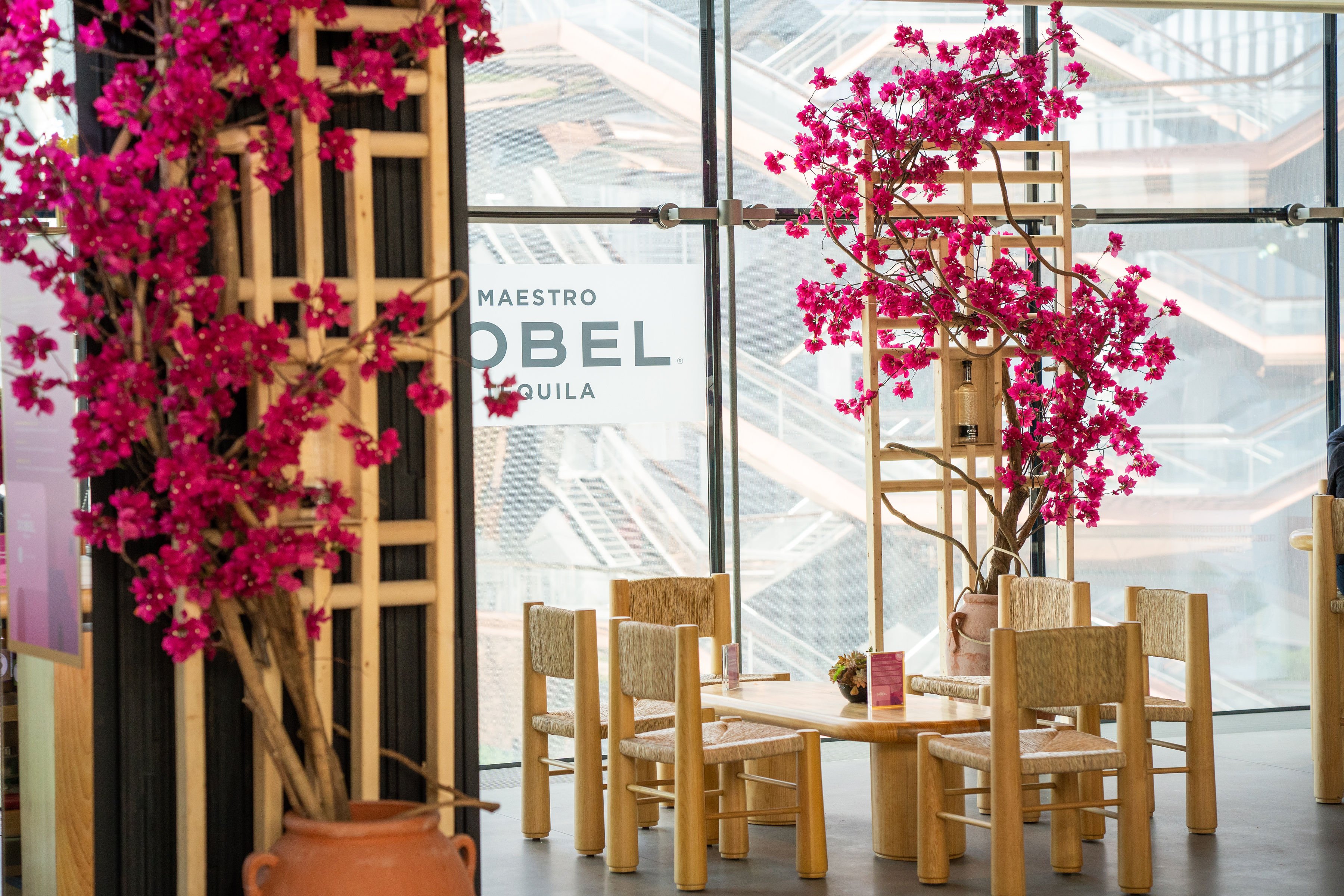
There is a small oasis on the top floor of the Shed for the current Frieze New York art fair. Simple yet elegant pale wood chairs and tables are surrounded by large terra cotta pots filled with bright fuchsia bougainvillea and yellow roses. It’s a stark contrast to the backdrop of the Vessel structure, hulking in the window like a giant, gleaming spaceship.
“We really wanted a sense of warmth to the space,” said Alejandra Martinez.
In her oversized pastel pink suit, Alejandra stood out from the throngs of black-clad Frieze attendees. She was sipping on a Maestro Dobel cocktail (called a “Rosa Bugambilia,” which includes prickly pear syrup and lime juice).
Alejandra is the founder of Anonimo Collective and creative director of Maestro Dobel’s Artpothecary, a platform to celebrate this eternal pursuit for innovation, showcasing the visionaries and cultural richness of Mexico’s contemporary creativity through a series of immersive events, from the revered tequila brand (which is also a fair sponsor). She was perched atop a high stool amongst Maestro Dobel Artpothecary’s newest installation, a proud paean to Mexico. This year’s edition, showcased for the first time at Frieze New York, is titled “The Mexican Golden Age.”
“The Modern Age of Mexico” is an art fair oasis. Photo by Angela Pham.
“We’re celebrating architects and designers from the modernist age of Mexico,” Alejandra said. The focus is on Ricardo Legorreta, the award-winning architect and designer who died in 2011 and was a disciple of Luis Barragán. Both are credited with developing a new national architectural language, grassroots and homegrown and disconnected from European orthodoxy.
The items of furniture in “The Mexican Golden Age” are exquisite reproductions of Legorreta’s iconic 1972 “Vallarta” collection, made for one of his masterpiece constructions, the Camino Real Hotel. They’re fabricated in conjunction with Clásicos Mexicanos, a company that does faithful and exacting reissues of licensed Mexican design classics; many pieces they exhume are as gorgeous and forgotten as the deadstock fabrics they source.
The simplicity of the “Vallarta”-inspired pieces belies their minimal mastery. If you look close, there are no bolts or hinges holding the blonde pine pieces together. But this isn’t cold modernism; they exude non-elitist comfort and utility. The chairs and stools beckon you to sit and relax (and yes, enjoy a shot or cocktail). But it’s not just the design of the era that resonates with Alejandra. The entire era was a halcyon age.
Maestro Doble creative director Alejandra Martinez. Photo by Fernando Marroquín.
“The film industry and art scenes were in a golden age, too,” Alejandra said. “What I love about that time in Mexico was that tequila was very organic to the way of living. At the time, tequila wasn’t exported. It wasn’t even a national product, it was regional to Jalisco. People from Mexico City would travel to Jalisco to have tequila there. It wasn’t what it is like today it was a sort of a local ritual.”
Alejandra was born and raised Jalisco, the birthplace of tequila.“I grew up thinking tequila was medicine,” she said. The medicine is served up however you like it.
Next stops for Maestro Dobel Artpothecary are DesignMiami/ and then Frieze Los Angeles 2023. The set-ups will vary with additional pieces to fit the different footprints at each fair. “The Golden Age of Mexico” isn’t just amazing furniture, food, flowers, and tequila. It’s a celebration of the culture and identity of Mexico.
A closeup view of Clásicos Mexicanos’s take on Ricardo Legorreta’s classic design. Photo by Angela Pham.